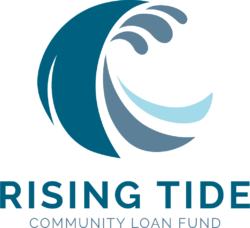Community Development Financial Institutions, also known as CDFIs, are local community lenders that provide services, such as loans and/or financial advice to people, businesses or communities that have been historically ignored by traditional financial institutions. CDFIs specialize in providing loans to small businesses, affordable housing projects and nonprofit organizations.
In this post, you’ll learn:
- The history of CDFIs
- How CDFIs work
- CDFIs impact on society
The history of CDFIs
The need to provide financial services in low-income areas has been sought since the 1880s, when the first minority owned bank was founded. Many have tried to look for ways to better the economic opportunities and conditions in underserved communities. In the mid-1980s, Cliff Rosenthal of the National Federation of Community Development Credit Unions proposed a National Community Bank modeled on the National Coop Bank. Rosenthal, along with Martin Paul Trimble of the then-named National Association of Community Development Loan Funds (now OFN), convened to form the CDFI Coalition.
Shortly after assuming office in 1993, President Bill Clinton proposed legislation to provide financial support for CDFIs serving customers in low-income communities. In 1994, the bill was signed and the Community Development Financial Institutions Fund was established by the Riegle Community Development and Regulatory Improvement Act of 1994. The CDFI Fund’s purpose is to bring new life to areas that need hope. For some, that hope may consist of becoming a business owner, having decent housing, and/ or simply wanting a better life for their families.
How CDFIs work
CDFIs receive money to lend from a number of sources; including banks, individuals, government agencies and foundations. The funding is generally targeted for communities that have limited access to capital and/or are economically distressed. The funding can be used to offer low-cost mortgages to first time home buyers or provide loans to small businesses. Let’s say you want to start or expand your existing business. You may need capital to cover startup costs, purchase equipment or hire more people but you may not qualify for a traditional bank loan. A CDFI may be a better option for you. To find a nearby CDFI , check here.
CDFIs bring financial services to individuals and businesses that are unable to get funding from a traditional source. The loans they provide allow people to take control of their financial future and they provide underserved communities with the chance for economic growth.
CDFIs impact on society
CDFIs make dreams come true as they provide a level playing field for all. Their help results in the creation of jobs, more affordable housing, and financial stability for their participants, which results in more money staying in the local economy. CDFIs help strengthen rural and urban communities and provide equal opportunity to all.
In a perfect world…
Community Development Financial Institutions would not be needed. In a perfect world, all, regardless of race, color, gender, income level or length of time that one owns their business, would be able to readily obtain the financial assistance that they need from a bank or credit union. Unfortunately, for too many, this isn’t the case. While not a fit for all, CDFIs are a safe a viable solution for many.



